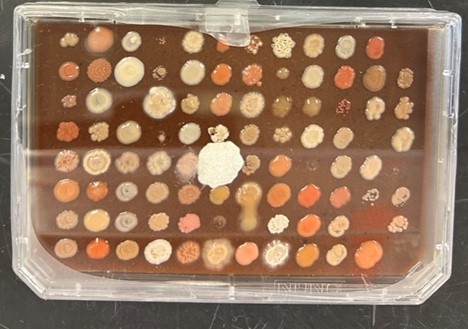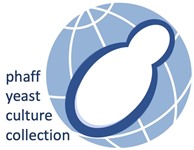Contract Screening at the Phaff collection

Whether your project involves adaptive evolution of a non-GMO yeast or genetic engineering of your favorite robust industrial strain, the Phaff collection can provide useful strains, genetic material and data to jump start strain development. Somewhere in our freezer there is probably a yeast strain that already has some of the properties you need, such as ability to consume certain carbon sources, tolerate industrial stresses such as temperature or pH, or produce desired products such as primary or secondary metabolites, enzymes, food ingredients, or bioactive compounds. These yeasts can be found through a contract screening project.
Here's how a contract screening project is performed at the Phaff collection.
Work plan: Phaff collection personnel work with outside scientists to develop a detailed screening protocol, under terms of a nondisclosure agreement if needed. Other research and service labs at UC Davis often collaborate such as to analyze fatty acids, to determine chemical structures of products, to provide and analyze lignocellulosic hydrolysates for yeast growth, or to scale up in bioreactors. Because the Phaff collection has over 10,000 strains, selecting a reasonable number of strains for analysis is a critical step. Selection criteria may include:
- Include yeasts with desired properties such as growth temperatures, pH tolerance, ability to consume certain nutrients, or produce certain products
- Add relatives of these yeasts (for example additional strains of the same species; same genus)
- Prefer species that are already GRAS, or related to those with GRAS status
- Prefer strains from USA (to avoid Nagoya Protocol restrictions)
- Prefer strains owned by the University of California, to simplify commercial licensing (80% of Phaff collection strains are owned by UC)
- Omit known plant, animal and human pathogens
Strains that meet selection criteria are selected by Phaff collection personnel. Screening Phase 1 is often a simple growth plate or colorimetric assay of hundreds of strains. Follow-up Phase 2 assays of promising candidates could include genetic screens, more detailed growth profiling, or chemical analyses. The most promising yeast strains are then selected for further strain analysis and development at the client’s facility.
Budget: Based on the work plan, Phaff collection personnel draft a budget including the labor, supplies, any equipment not already owned by the collection, and UC Davis standard indirect costs.
Agreements: The UC Davis Sponsored Programs Office works with the client’s people on an agreement which covers terms such as confidentiality, intellectual property, license options, milestones, reports, and payment. Once the agreement is signed, the lab work begins!
Contact culture collection personnel for more details.

